Over the span of the last dozen years, several million American households with satellite television have tuned in each week to Link TV, an eye-opening and mind-expanding channel dedicated to letting the cultures of the world tell their own stories. Filling a void by bringing to light societal issues rarely covered by mainstream media is a major reason why Link TV has not only thrived but is expanding. It is perhaps the only television channel in the world that measures its success not in ratings, but in getting people to click off their sets and get off their sofas into engagement and action.
Now, with the release of a new iPad application and the recently announced merger with KCET of Los Angeles, Link TV's audience will grow further and with worldwide access. The channel debuted on DirecTV and Dish Network as a 24-hour non-commercial, non-corporately funded network in 1999. It has relied solely on viewer contributions and foundational support.
One hallmark of Link TV (www.linktv.org) is how it has continuously been ahead of the curve in understanding the ways people access news and information. It foresaw the importance of bringing Americans an in-depth focus on Middle East cultures well before 9/11. Link's founders also understood years in advance why viewers wanted unfiltered, multiple points of view about important world events long before Google, YouTube and social media made it more commonplace.
The launch this week of the new LinkTV World News iPad-based platform (download here) will organize Link's vast archives and associated links, making them easy to navigate and instantaneously available worldwide at the touch of a finger. Funded by The Bertha Foundation, the app culls from more than 50,000 news sources around the world -- placing mainstream news next to alternative media next to raw videos on the scene, combined with documentaries for more context, related print articles and the ability to "take action" on global issues. The app went to #1 on the iTunes store for North America within hours of its debut last week.
The soon-to-be-finalized merger with KCET announced two weeks ago is "an enormous opportunity to re-invent the value and purpose of 'independent media'," according to Paul Mason, President and CEO of Link TV. While both entities will continue as separate channels, KCET will offer a sampling of Link TV programs to its viewers in the second largest broadcast market in the country. Link TV will also gain expanded broadcast and production facilities and a stronger infrastructure while significantly reducing their operating costs.
Scanning the globe to air its mix of news, documentaries, program series and World Music, Link TV built its audience by going beyond the seams and into the gray areas rarely seen in conventional broadcast media. Most recently, Link has attracted new viewers by featuring obscure but critically acclaimed foreign-produced entertainment series such as Borgen from Danish television and the Arab/Israeli comedy Arab Labor. The bulk of overseas television programs available to U.S. viewers have otherwise been the mainstay of PBS, which has predominantly offered British-made fare.
The impetus to the creation of Link TV goes back to the more primitive use of satellite technology in the early 1990s. Before Skype made such practice commonplace, linking people face to face via the video screen presented some exciting new frontiers. Producer Kim Spencer (Link TV's co-founder and chief content officer) helped organize the "space bridges" between Soviet Russia and the United States during the glasnost era that attracted wide interest as an alternative track for diplomacy. As the technology advanced, in the 1990s he helped develop the Vis a Vis series with a French partner, that linked people face-to-face via teleconferencing gear, including an intimate dialogue between an Iranian and American schoolteacher, that was the first documentary shot by an American in Iran after their revolution. Although the film was partially funded by the Corporation for Public Broadcasting, Spencer was not able to get PBS to schedule Beyond the Veil with any urgency. Their inaction spoke to a deeper ambivalence among American media programmers who dismissed international content as uninteresting to typical viewers and therefore a low Nielsen ratings getter.
A further catalyst to start an U.S. international channel came from Spencer's work overseas as a co-founder of another non-profit called Internews. The organization was making a difference using television to promote openness and democracy in the former Soviet Union, the ex-Yugoslavian republics and other countries where state TV had been in control. Internews' board pointed out that the same kind of culturally-broadening initiative was sorely lacking in the US. With cable and satellite television suddenly making available hundreds of channels, the board pointed out that not a single one dealt with the rest of the world and urged the executive team to explore the possibility. When the FCC required the new satellite providers to offer opportunities to non-profits, they jumped at the chance. In January 1999, the co-founders of what would soon be called Link TV decided to make a bid. They had just ten months to work on their proposal while securing partners, receiving seed monies and a further commitment if the channel went on air. Ultimately, the MacArthur Foundation and a matching grant from the Ford Foundation made the start up possible.
Link TV received the go-ahead five weeks prior to its December 15, 1999 launch on the proviso that it could go from scratch to having 24/7 programming ready to go (otherwise their license would be awarded to another entity on the list). To round out the documentary schedule and fill the gaps as they rushed to the deadline, Link came up with the solution to add World Music videos, mirroring the old MTV model but still in keeping with Link's mission. "It came out of necessity but it ended up becoming a huge programming strength for us," Spencer explained, attracting broader appeal for all of Link's programs, especially among younger viewers.
From the start, Link TV devoted a portion of its programming to give filmmakers and journalists based in the Middle East (including Israel, Iran and the Arab countries) an opportunity to reach American audiences. "We were concerned with what was going on in the region and Americans' general lack of knowledge about the cultures," said Spencer. "We had control over our airtime and knew there were TV programs out there that Americans weren't seeing." Link formed agreements with broadcasters and news channels covering the area across the political spectrum. Once 9/11 happened, Link's decision proved prescient as it already had in place comprehensive local-generated coverage while the other news organizations were scrambling to do so. "We had a surge in viewers when Americans suddenly realized they didn't know who their enemy was and didn't understand why those people hated them. As Americans were suddenly awakening to the rest of the world, Link TV was able to help more fully explain the deeper context of the peoples of the Middle East and their cultures." A month and a half later, Link debuted its now decade-old daily news show Mosaic, thanks to an initial grant from the John S. and James L. Knight Foundation. The half-hour Mosaic presents a mix of news reports drawn from the 35 Middle East channels the multilingual team monitors each morning-- Israeli, Arabic and Iranian broadcasts that are shown unedited, translated into English.
Link TV's experience with Mosaic, mirrored as well with its other news, documentary and current affairs programming, underscores a growing viewer interest in more access to their news from multiple points of view. "Fewer people today trust any one news outlet to give them the whole story, whether it is the New York Times or CNN," according to Paul Mason. "The pattern in American media is that the story has to be black and white with heroes and villains. As a network news producer, everything has to fit into ninety seconds. Print journalists face similar limitations. Editors want the final product to be a seamless recreation of reality. I always found the most interesting stories were in those seams where things were gray and gritty. In that way, Link is truly a gritty place." As one viewer best described it, "Link has the freedom to report stories and points of view other stations won't dare."
The move into iPad and soon other mobile platforms was fueled by Link's polling into how its unfiltered approach is especially appealing to the younger adults aged 18-34 (based on research funded by the Knight Foundation). This demographic of Link TV viewers outnumbers the 35-49 and 50-64 age groups (38% to 36% to 26% respectively). "What surprised me in the research was how important it was to younger viewers to dive deeper beyond what might start out as a headline on Yahoo," stated Hannah Eaves, VP in charge of Link's digital and Internet services. "People are very interested in raw video with no spin or editing between them and what they're seeing."
Bolstered by a grant from the Bill & Melinda Gates Foundation, Link first developed its "ViewChange" platform as a website (www.viewchange.org), applying powerful semantic search technology for the first time to social mission video. Organized on 12 front-burner topics, users can access hundreds of related documentary videos -- under the global development category alone, there are 465 videos listed. As the video plays, a search devise reads the transcript and compiles other related videos and web-based articles as well as actions on each topic the viewer can take.
Now Link's developers have created the LinkTV World News iPad app in partnership with The Bertha Foundation, using the same semantic search technology, immediately linking breaking news stories to related news videos as well as documentaries on the same subject, which can be viewed right there on the iPad (mostly free, but sometimes with a small payment for documentaries). The app also has a world map that pinpoints news hot spots over the last 24 hours, week or month. Much of the raw video featured on the LinkNews app is vetted by a service called Storiful, which confirms the authenticity of user-generated content. "If someone says that a bombing or a protest happened on this date, they'll look at satellite images to check landmarks and also verify that the weather matches what it was supposed to be at that time," explains Eaves. (see http://news.linktv.org/apps )
"It's a miracle today if you can put something out and have it be incredibly successful," Spencer concludes. "To keep it going, you also need to have a long term commitment to sustain funding and having the flexibility to continuously respond to what people are interested in. We are now onto the next generation to take our original idea and make it more multidimensional."
